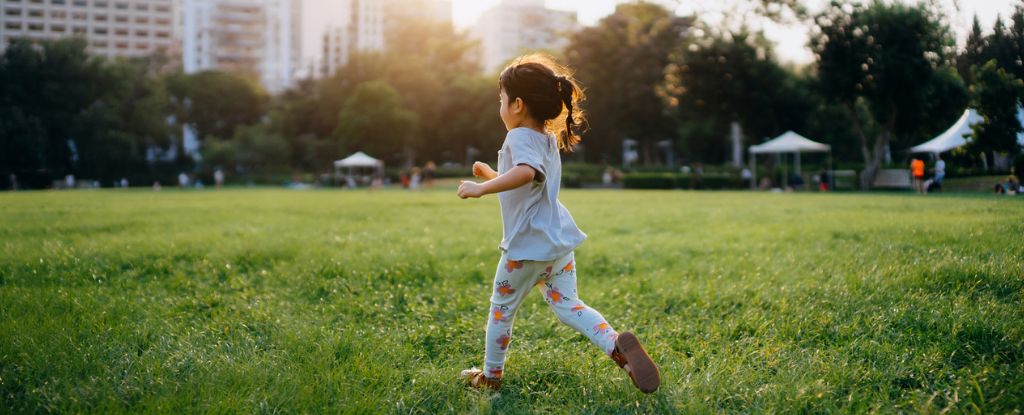Children who live in walking distance of a green space, like a park, garden, or forest, are more likely to have stronger and healthier bones, according to new research.
The study is the first of its kind, and it supports previous evidence that found adults living in greener areas tend to have higher bone strength, too.
In Belgium, among 327 children aged 4 to 6, researchers at Hasselt University found those who lived in the greenest places had higher bone mineral density.
The greenest places were defined as those that fell in the top 20 to 25 percent of amount of green space within close proximity. Among kids who live in these areas, a roughly ten-minute walk to a green space with tall trees or shrubs was associated with bone density gains equivalent to half a year’s natural growth.
What’s more, children who lived in the greenest areas and within a 20-minute walk to a tall green space had a 61 percent lower risk of having low bone density scores.
The results were consistent across both sexes, even accounting for a slew of other factors, including weight, ethnicity, daily screen time, vitamin supplementation, dairy consumption, season, maternal educational level, and neighborhood median annual income – all of which have been shown to determine a child’s bone density.
“These findings highlight the importance of early-life exposure to residential green space on bone health during critical periods of growth and development, with long-term implications,” writes Hasselt University environmental epidemiologist Hanne Sleurs and colleagues.
“Despite increasing evidence about the health benefits of green space exposure, the available studies on the association with bone mineral density are scarce.”
The development of the human skeleton in childhood is crucial, as it sets a strong foundation for future bone health.
Despite the solid, inanimate appearance of our skeleton, bone is a living tissue that gradually increases in density in early life, peaking in the mid to late 20s. A balanced nutritional diet and physical activity, especially weight-bearing and resistance exercises, are all important parts of creating strong and dense bones that will last as long as possible.
Green spaces could help facilitate that lifestyle.
Evidence increasingly suggests that living near nature has impressive benefits for mental health, heart health, immune health, and vascular health.
In some parts of the world, doctors have even begun prescribing nature walks to their patients, along with other usual recommendations like physical activity and a nutritional, well-balanced diet.
Interestingly, though, some studies have found that the type of green space a person is surrounded by matters. Access to tall vegetation, like trees, seems to hold the most benefits.
With all that in mind, the researchers investigated how urban, suburban, and rural green spaces with vegetation above and below 3 meters (nearly 10 feet) in height impacted the bone density of local children.
The data they used was from a local birth cohort study, which followed the health of mother and child pairs for the first four to six years of the child’s life.
Most of these children were affluent and of European descent, had an hour or two of daily screen time, and ate at least one dairy product a day (an easy source of calcium).
Their home addresses were geocoded to check for green areas.
Analyzing and comparing the data, the researchers found that tall green spaces within 500 meters of a child’s home are associated with increased bone mineral density.
If a similar green space is just 100 meters away, however, that benefit doesn’t increase any further.
“Thus,” the authors suggest, “it is plausible that our participants were more likely to walk from home to the nearest available and accessible green space (eg, park, garden, or forest) within 500 to 1000 meters around the residence.”
Unfortunately, the birth cohort study did not collect detailed information about the frequency and duration of outdoor exercise, so screen time was used as a proxy for sedentary behavior.
Future research will need to continue digging into why green spaces might hold benefits for bone health.
“The stronger the bone mass is during childhood, the more capacity you have for later in life,” epidemiologist Tim Nawrot from Hasselt University told The Guardian.
“So the real public health message from this study is that urban planners can make stronger bones of children, and that has long-lasting consequences.”
The study was published in JAMA Network Open.





